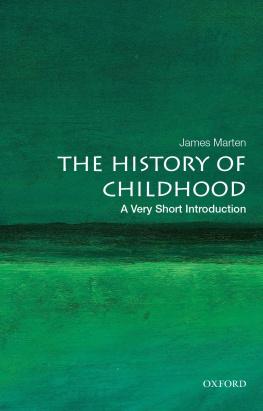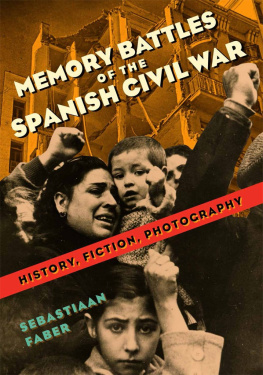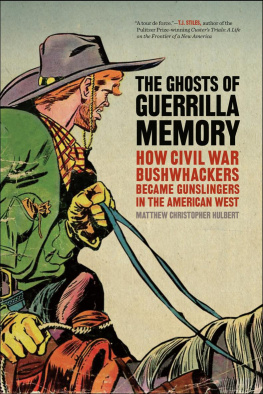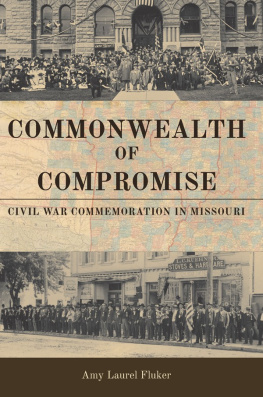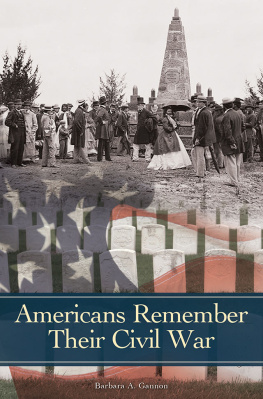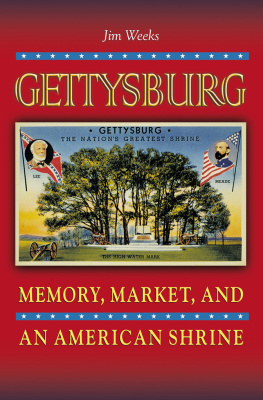BUYING AND SELLING CIVIL WAR MEMORY IN GILDED AGE AMERICA

SERIES EDITORS
Stephen Berry
University of Georgia
Amy Murrell Taylor
University of Kentucky
ADVISORY BOARD
Edward L. Ayers
University of Richmond
Catherine Clinton
University of Texas at San Antonio
J. Matthew Gallman
University of Florida
Elizabeth Leonard
Colby College
James Marten
Marquette University
Scott Nelson
University of Georgia
Daniel E. Sutherland
University of Arkansas
Elizabeth Varon
University of Virginia
Buying and Selling Civil War Memory in Gilded Age America
EDITED BY JAMES MARTEN AND CAROLINE E. JANNEY
The University of Georgia Press Athens
2021 by the University of Georgia Press
Athens, Georgia 30602
www.ugapress.org
All rights reserved
Set in 10/13 New Baskerville Std Roman
by Kaelin Chappell Broaddus
Most University of Georgia Press titles are available from popular e-book vendors.
Printed digitally
Library of Congress Cataloging-in-Publication Data
Names: Marten, James Alan, editor. | Janney, Caroline E., editor.
Title: Buying and selling Civil War memory in Gilded Age America / edited by James Marten and Caroline E. Janney.
Description: Athens : The University of Georgia Press, [2021] | Series: Uncivil wars | Includes bibliographical references and index.
Identifiers: LCCN 2020055801 | ISBN 9780820359663 (hardback) | ISBN 9780820359656 (paperback) | ISBN 9780820359670 (ebook)
Subjects: LCSH : United StatesHistoryCivil War, 18611865Collectibles. | United StatesHistoryCivil War, 18611865Social aspects. | Material cultureUnited StatesHistory19th century. | SellingCollectiblesUnited StatesHistory19th century. | Collective memoryUnited StatesHistory19th century. | Popular cultureUnited StatesHistory19th century.
Classification: LCC E 468.9 . B 896 2021 | DDC 973.7/1dc23
LC record available at https://lccn.loc.gov/2020055801
Contents
James Marten and Caroline E. Janney
SECTION 1.
ALL TRUE SOLDIERS: DEFINING VETERANHOOD
John Neff
Jonathan S. Jones
Kevin R. Caprice
Crompton B. Burton
Shae Smith Cox
Edward John Harcourt
SECTION 2.
ATTENTION COMPANY: MARKETING AND ADVERTISING
Anna Gibson Holloway and Jonathan W. White
Amanda Brickell Bellows
Natalie Sweet
David K. Thomson
SECTION 3.
COMING TO TELL THE TALE: IMAGINING THE WAR
Barbara A. Gannon
Margaret Fairgrieve Milanick
Paul Ringel
James Marten
Caroline E. Janney
Acknowledgments
Thanks first to our authors, who displayed patience and professionalism through an unusually long process of articulation and revision; we appreciate their willingness to meet deadlines and expectations and to aim at a sometimes moving target. Thanks also to the anonymous, extraordinarily thorough, and exacting readers of the manuscript. They might not recognize their hard work in the finished book, but their engagement with the manuscript deeply influenced the final product nonetheless.
Amy Murrell Taylor and Stephen Berry welcomed this book into their UnCivil Wars series with open arms and offered typically fresh and practical ideas for improving it. And thanks to the staff at the University of Georgia who eased this project through the publication process: Mick Gusinde-Duffy, Jon Davies, and Beth Snead.
John Neff, who wrote the essay on Libby Prison, died suddenly not long after finishing his essay. He will be remembered by all who knew him as a wonderful colleague, excellent historian, and beloved teacher.
BUYING AND SELLING CIVIL WAR MEMORY IN GILDED AGE AMERICA
Introduction
JAMES MARTEN AND CAROLINE E. JANNEY
In the spring of 1871, the Southern Agricultural Works, H. M. Smith & Co. of Richmond, mailed its annual catalog of agricultural implements to agrarians throughout the state of Virginia. Flipping through the pages, farmers found a host of tools that might make their arduous labor at least somewhat less taxing. Some gravitated toward the garden and field rollers for breaking and pulverizing clods of dirt, others eyed the wooden barrows for loading vessels with cord wood, and still others wondered whether the twenty-three-quart Arctic Freezer ice-cream maker might be worth its steep price of twenty dollars. But at least a few no doubt found exactly what they needed on page 73: the dirt scraper, or ox shovel. Drawn by a team of horses or oxen, it had been designed for carrying away earth and scooping out ditches, drains, and any excavations and was, the ad promised, especially useful in leveling earthworks and filling rifle pits.
The matter-of-fact description illustrates just how much the Civil War remained a part of U.S. life for years after the fighting ended, not only in the great political issues being decided in Washington, D.C., and in state capitals throughout the old Confederacy, but also in the everyday lives of southerners and northerners alike. In this case, the ox shovel would have particularly appealed to Virginia farmers trying to make a living on the old battlefields, in places such as Spotsylvania County, where the armies had clashed four times during the war, or along the defenses of Richmond and Petersburg that had witnessed months of trench warfare that left the land denuded of trees and crisscrossed with earthworks. The entrenchments and fortifications that had come to dominate the last year and half of the war cut deep scars on the landscape and prevented farmers from plowing, much less planting, their fields. Yet as with so many products and services sold in the years after 1865, the Civil War had not spawned a brand-new tool, but it had both shaped the advertising and given new meaning to a common object. In purchasing and wielding the ox shovel, a farmer might remove the scars of war and restore fields to their agricultural bounty. The war might thereby be erased from the landscape even as it was deployed to sell more products.

In 1871, the Illustrated Annual Catalogue of Agricultural Implements published by the Southern Agricultural Works, H. M. Smith & Co. of Richmond, Virginia, advertised a dirt scraper that might be used to remove field fortifications and earthworks that remained six years after the fighting ended. (Courtesy of Eric Mink)
To the north in the small town of Gettysburg a similar process of removing the visible traces of war unfolded. Here, too, the war had transformed the value and meaning of objects. Visitors to the town would be besiegedat least as portrayed by Harpers Weeklyby young boys peddling spent bullets, bayonets, canteens, and other detritus of war scavenged from the battlefield and converted into souvenirs. In the years that followed, Gettysburg would become the most famous and most popular battlefield of the war, drawing tourists and veterans to reunions, historic tours, exhibits, and even amusement parks. Commerce mixed with patriotism and a dedication to preserving a certain version of the battles memory to create plenty of opportunities for profit making.
These large and small examples of Civil War commerce and memory foreshadowed the central place such business efforts would assume during the Gilded Age. The Civil War had consumed Americans over four long, bloody years. For the thirty or forty years after the war, the generation that survived and their children consumed the Civil War in products and services ranging from ox shovels to tobacco. Some individuals
Next page

